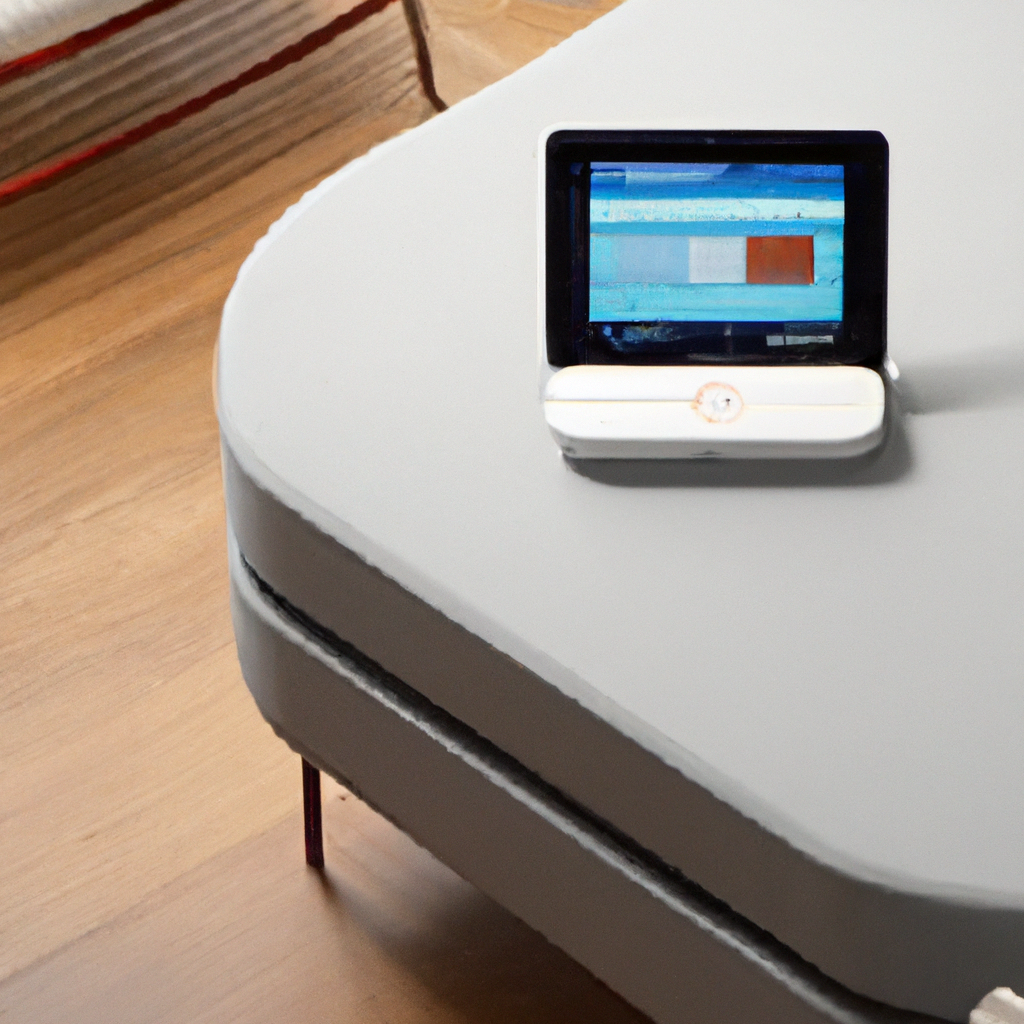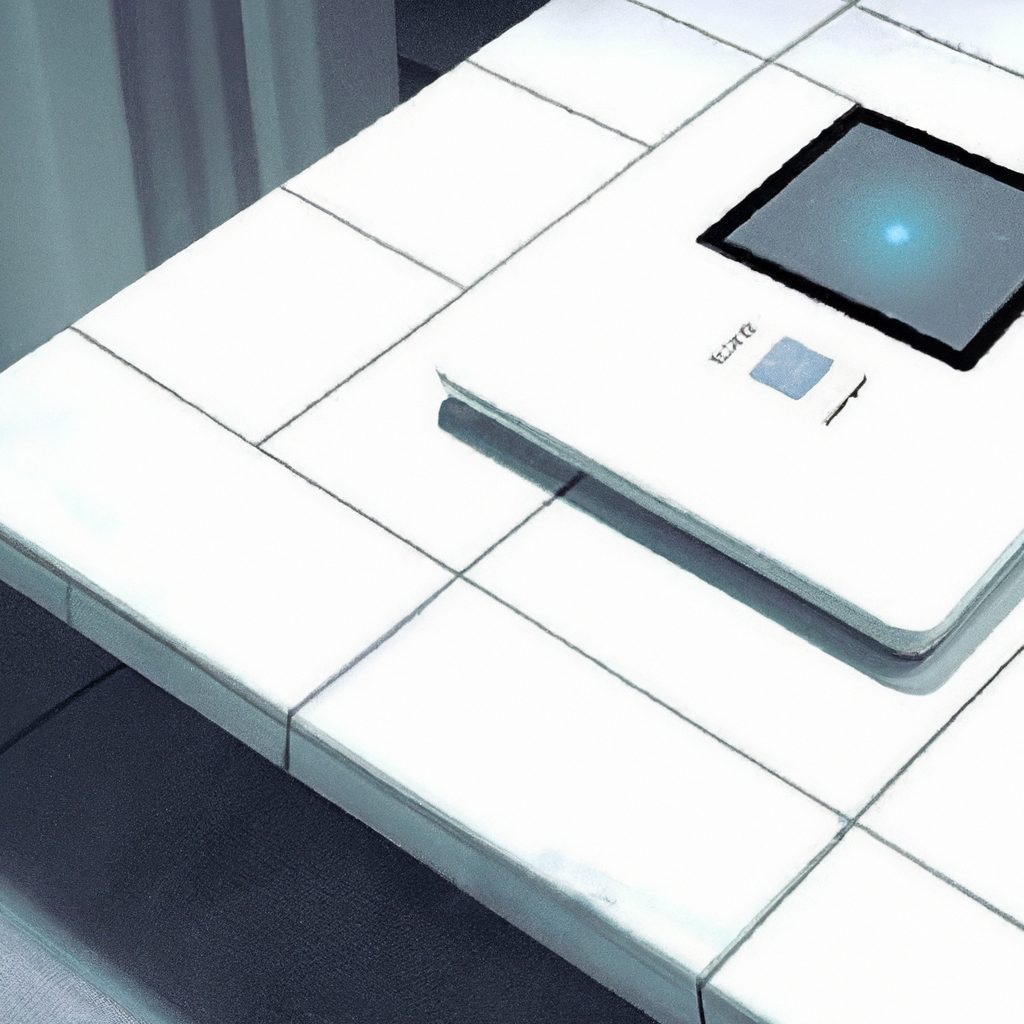In today’s rapidly advancing world, smart technology has revolutionized the way we live, and its impact on enhancing accessibility for individuals with disabilities cannot be overlooked. With the advent of innovative devices, such as voice-controlled assistants, smart home hubs, and motion sensors, individuals with disabilities can now enjoy a newfound sense of independence and convenience in their living rooms. These technologies seamlessly integrate into the home environment, offering intuitive control over various electronic devices, entertainment systems, and even household appliances. By eliminating physical barriers and providing accessible control options, smart technology opens a world of possibilities and enhances the quality of life for individuals with disabilities in the comfort of their own living rooms.

Increased independence
Living with a disability shouldn’t restrict your independence, and smart technology can play a key role in enhancing your autonomy. Voice-controlled devices, such as smart speakers and virtual assistants, allow you to control various aspects of your living room with simple voice commands. Whether it’s adjusting the lights, changing the temperature, or playing your favorite music, these devices can make your living room more accessible and manageable.
Smart home automation takes accessibility to the next level by allowing you to automate tasks and create personalized routines. With smart plugs, you can control your electronic devices remotely or schedule them to turn on/off at specific times. Imagine being able to turn on the TV, open the curtains, and adjust the lights without having to move a muscle. Smart home automation can truly empower individuals with disabilities, giving them greater control over their living environment.
Smart remote controls are another fantastic innovation that enhances independence. These remotes are designed with accessibility in mind and come with features like large buttons, tactile feedback, and voice commands. They eliminate the need to juggle multiple remotes, making it easier for individuals with disabilities to navigate their entertainment systems and enjoy their favorite TV shows, movies, or games.
Improving communication and social interaction
Living rooms are often the center of social interaction, and smart technology can significantly improve communication for individuals with disabilities. Video conferencing platforms, like Zoom or Skype, allow you to connect with family, friends, or colleagues regardless of your location. Whether you’re having a virtual gathering, attending a meeting, or catching up with loved ones, video conferencing brings people together and reduces the sense of isolation.
Voice assistants, such as Amazon’s Alexa or Google Assistant, can be invaluable in facilitating communication for individuals with disabilities. They can help with tasks like sending messages, making calls, or even controlling smart home devices. By simply using your voice, you can stay connected with others and perform various functions without having to rely on traditional methods.
Social media integration is another way smart technology enhances communication. It allows individuals to remain connected with friends and family, share updates, and engage in online communities. Whether it’s through accessible apps or voice-controlled social media platforms, individuals with disabilities can stay socially active and maintain meaningful relationships.

Customized control settings
Smart technology offers a range of customizable control settings that cater to the specific needs of individuals with disabilities. Adaptive voice recognition systems ensure that voice-controlled devices can understand a wide range of accents, dialects, and speech patterns. These systems learn and adapt to your voice over time, improving accuracy and making interaction seamless.
Personalized preferences are also a crucial aspect of smart technology. With features like user profiles, individuals with disabilities can personalize their settings, allowing the technology to adapt to their specific needs. This includes customizing voice commands, adjusting display settings, or tailoring the interface to enhance accessibility.
Multiple accessibility options ensure that smart technology is inclusive for everyone, regardless of their abilities. Whether it’s providing alternative input methods, offering adjustable font sizes and color contrasts, or supporting screen reader compatibility, smart devices and applications aim to make information and control accessible to all.
Assistive technologies for visual impairments
For individuals with visual impairments, smart technology offers a range of assistive tools that make the living room more accessible. Screen readers, software programs that use synthesized speech to read aloud text on a screen, enable individuals with visual impairments to access information on a computer or television screen. By voicing the content, whether it’s an article, a movie description, or navigation menus, screen readers allow individuals to engage with the digital world.
Braille displays are tactile devices that convert digital text into braille, providing individuals with visual impairments the ability to read and interact with electronic content. By displaying braille characters that correspond to the text on the screen, these devices enable individuals to access information independently and efficiently.
Smart lighting systems can also significantly enhance accessibility for individuals with visual impairments. By using motion sensors, voice commands, or smartphone apps, individuals can control the lighting in their living rooms without relying on physical switches, ensuring that the space is well-lit and comfortable.

Assistive technologies for hearing impairments
Individuals with hearing impairments can benefit from various smart technologies designed to enhance accessibility in the living room. Closed captioning, available on most modern TVs and streaming platforms, provides written transcriptions of dialogues and sounds in videos. This feature ensures that individuals with hearing impairments can follow TV shows, movies, or any other audiovisual content more efficiently.
Amplified sound systems, such as soundbars or wireless speakers, can help individuals with hearing impairments enjoy audio content without missing out on any details. These systems enhance the volume and clarity of the sound, allowing individuals to have a more immersive and enjoyable experience.
Smart alerting devices are designed to notify individuals with hearing impairments of important sounds and events in their living rooms. These devices use visual cues, such as flashing lights or vibrating alerts, to indicate when the doorbell rings, the phone is ringing, or a smoke alarm has been triggered. By providing alternative means of feedback, smart alerting devices ensure that individuals with hearing impairments can stay connected and safe.
Enhanced environmental control
Smart technology enables individuals with disabilities to have enhanced control over their living environment, ensuring optimal comfort and accessibility. Temperature and climate control systems allow individuals to adjust the temperature, fan speed, or even humidity levels in their living rooms with ease. Voice commands, smartphone apps, or remote controls make it convenient for individuals to personalize the climate settings and create a comfortable living space.
Smart curtains and blinds offer individuals a convenient way to control natural light and privacy. With simple commands or smartphone apps, individuals can open or close their curtains, adjust the blinds, or even set automatic schedules to ensure optimal lighting conditions throughout the day. This feature is especially useful for individuals with mobility impairments who may struggle with manual operation.
Smart power outlets and switches, often compatible with voice commands or smartphone apps, allow individuals to control their electronic devices without the need for physical interaction. Whether it’s turning on a lamp, charging a device, or activating a specific outlet, individuals can conveniently manage their living room’s power supply, enhancing accessibility and convenience.

Safety and emergency assistance
Smart technology plays a critical role in ensuring safety and emergency assistance for individuals with disabilities in their living rooms. Smart smoke and carbon monoxide detectors provide an added layer of protection by detecting and alerting individuals to potential threats. With features such as voice alerts, smartphone notifications, and integration with smart home systems, these devices ensure that individuals can promptly respond to emergencies and evacuate if necessary.
Emergency call systems, often wearable or voice-activated, provide individuals with a quick and efficient way to call for help in emergency situations. Whether it’s a pendant, a button, or a voice command, individuals can immediately connect to emergency services or designated contacts, ensuring that assistance is just a few seconds away.
Fall detection and alerts are particularly beneficial for individuals with mobility impairments or those prone to falls. These systems use advanced sensors and algorithms to detect falls or sudden movements and automatically trigger alerts to designated contacts or emergency responders. By providing immediate notifications, these systems can drastically reduce response time in critical situations.
Entertainment and recreational opportunities
Smart technology opens up a world of entertainment and recreational opportunities for individuals with disabilities in the living room. Accessible TV and media streaming platforms offer closed captions, audio descriptions, and easy navigation options, ensuring that individuals can fully enjoy their favorite TV shows, movies, or online content.
Smart gaming interfaces, such as motion-sensing controllers or adaptive switches, allow individuals with disabilities to participate in gaming and enjoy interactive experiences. These interfaces provide alternative control methods, accommodating a wide range of abilities and ensuring that gaming can be inclusive and accessible to all.
Interactive virtual experiences, made possible by technologies like virtual reality (VR) or augmented reality (AR), offer individuals with disabilities the chance to explore new worlds, engage in immersive activities, and even travel virtually. These experiences can provide a sense of adventure, excitement, and escape, all from the comfort of the living room.

Smart furniture and mobility aids
Smart furniture and mobility aids are designed to improve accessibility and convenience for individuals with disabilities in the living room. Adjustable smart beds allow individuals to customize their sleeping positions, raising or lowering specific sections of the bed according to their comfort and mobility needs. With voice commands or smartphone apps, individuals can easily adjust the bed’s settings, ensuring a good night’s sleep.
Smart wheelchair and mobility device controls enable individuals to navigate their living rooms effortlessly. Whether it’s controlling the wheelchair’s movement, adjusting the seat’s position, or activating additional features, these controls offer individuals greater independence and mobility within their living spaces.
Smart furniture, designed with easy access in mind, ensures that individuals with disabilities can move around their living rooms with minimal effort. This includes features like motorized lifting mechanisms for chairs or sofas, adjustable tables, and storage solutions at comfortable heights. By reducing physical barriers and providing convenient access, smart furniture enhances independence and usability.
Integration with wearable devices
Smart technology seamlessly integrates with wearable devices, providing individuals with disabilities a range of health monitoring and assistance features right from their living rooms. Wearable devices, such as smartwatches or fitness trackers, can monitor vital signs, track activity levels, and provide real-time feedback and notifications. This information can help individuals manage their health, track their progress, and make informed decisions about their well-being.
Gesture control and movement tracking technologies allow individuals with disabilities to interact with smart devices and applications using natural hand movements or body gestures. Whether it’s navigating through menus, controlling virtual environments, or even operating appliances, gesture control offers an intuitive and accessible way to interact with technology.
Nutrition and fitness management is made easier with smart technology. From smart scales that track weight and body composition to nutrition apps that provide customized meal plans and dietary advice, individuals with disabilities can take control of their health and well-being right from their living rooms. These tools promote healthy habits, assist in goal setting, and offer personalized recommendations for a balanced lifestyle.
In conclusion, smart technology has revolutionized accessibility in the living room for individuals with disabilities. From increased independence and improved communication to customized control settings and assistive technologies, there are endless possibilities for enhancing accessibility and inclusivity. Whether it’s through voice-controlled devices, smart home automation, or integrated wearable devices, individuals with disabilities can enjoy greater autonomy, comfort, and engagement in their living environments. With ongoing advancements and innovations, smart technology continues to pave the way for a more accessible and inclusive future.
